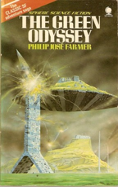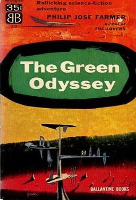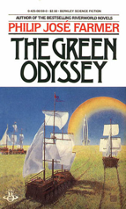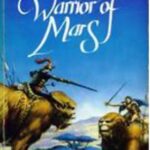by MJ Moran
The Retirment Plan #1
When Covid hit in 2020, I found myself as a teacher with extra time but literally no place to go. No vacations, no restaurants, just myself and my cats in my cave. Being a single, divorced teacher with no children meant I really was left to my own devices. With that in mind, I decided to finalize some book sets and collections. Starting with obtaining every book Edgar Rice Burroughs had published (87 by last count) moving on to collecting all the Doc Savage stories (181) and then to a myriad of fantasy and science fiction series or authors.
As I gathered the books together, the question arose from many including myself, “What are you going to do with the collection?” The answer was easy, “read them” but it became existential for me. So, I told anyone and everyone who would listen that the books had become my retirement plan. Not to sell but to read.
In 2021, I hit the sweet spot in my years of working where my retirement was just shy of my current take home pay. I had been the administrator/field commander for my alternative education program for the last 7 years while teaching Science, History and English. During that time, I revamped our Continuation High School Program and felt it was time to hand over the reins.
So, the retirement plan was in full swing starting last July although I will admit to beginning the project before I actually retired. After reading my first E.R.B. book, I felt that it wasn’t enough to just read so I started to write down my thoughts and reflections of the material. I call them reflections over reviews since deep analysis of the actual writing is not my forte. The reflections are more visceral as well as expressing my history with the book or with the author. I do look for tropes or trends that the author uses since most of the books are read in publishing or written order.
You my dear reader, get to reap the rewards of my endeavors. All pomposity aside, hopefully, I can share my enthusiasm for these works while adding a little insight. I’m starting with the authors who wowed me as a teenager, my, then, modern trifecta to be sought out. Interwoven will be pulp heroes, fantasy authors and maybe a non-fiction gem snuck in among the others.
P.J.F. 1
Philip Jose Farmer was the first science fiction author that I sought out instead of seeking out a character. After which I would gravitate to Edgar Rice Burroughs, Lin Carter and Michael Moorcock. They would encroach on Farmer territory, but Farmer was my first love. He led me to depart with my hard-earned money for “gasp’ hard bound first editions. Farmer’s River World books being the first books I bought as they reached the shelves of B. Dalton Books. Stephen King would follow with my folks buying the books as Christmas presents. I would look to gather other authors in hardbound, mostly fantasy, but Farmer held me first.
So, as I retired, my additional author to read their works in order was Farmer. One of the biggest questions, in my mind, is what intrigued about his writing. He gets mixed reception, even from those who like his work. So let the P.J.F. ride begin.
- The Green Odyssey

Must admit that I took the title from a 21st century perspective, thinking how progressive Farmer was that his first book was dealing with alternative energy sources. I was quickly disabused of the notion when reading that the protagonist was Alan Green. So instead, this is Alan Green’s journey on the planet Xurdimur.

It was an enjoyable read keeping in mind that it is Farmer’s first published novel. The first part of the book had an Edgar Rice Burroughs feel to it. Not surprising since E.R.B. was one of Farmer’s idols. There is a battle in a castle that evoked similar E.R.B. fights, but P.J.F. had a lighter touch. Farmer has a sardonic sense of humor setting the tone for the story. As I’m analyzing and reflecting on stories, I’m noticing the breakdown of smaller works into story arcs or “acts”.

The first act established Green as a space traveler marooned within a feudal society. Lots of irony and humor, again with a light touch by Farmer. I mention this light touch because later in the beginning of the third act, there will be a tragedy that is seemingly glossed over by the author and the characters. But I get ahead of myself. Also introduced early on is Amra, Green’s wife, and his readymade family. Green and Amra are “slaves” in this society, subjected to the whims of the owners. Still within the society slaves can own property and go into business etc. as long as they don’t anger the owners. Within this culture, Amra is a remarkable woman who has a business while being a slave.
The second act sets Green on his odyssey working on a way to return home. The journey is on a merchant ship rolling through thousands of miles of flat grasslands. There are Ving (Viking) raiders as well as cannibals on the literal rolling hills throughout the plains. This is what I remember Farmer for more than anything else, fantastic settings and devices adapted to them. Farmer also has a strong woman protagonist in Amra who forces Green to not only take on the trip but to confront his decision to abandon her.
After an upheaval in the journey, Green discovers a secret about the moving hills while trying to save his family from cannibals and further his quest to get off planet. The upheaval results in the death of some of Green’s ready-made family members. Farmer’s light touch glosses over this with Amra pragmatically moving on to save the children still with her. Having read other science fiction works from this time, I understand the stoic let’s move on storytelling. As a modern reader, I do question the shed a few tears and move on plotting.
The climax of the story made me think back to such works as H. Beam Piper’s SPACE VIKING and other works where a space traveler is situated in dealing with non-modern human cultures. Piper may have been an influence although SPACE VIKING was published after THE GREEN ODYSSEY.
This was a fast read for me without too much thinking. 4 Acts, 4 settings make it quick. After reading I felt Farmer was tapping into the popular science fiction of the time. Stories dealing with the individuals struggle in a strange world with space travel and galactic empires in the background. Enjoyable and in the tradition of 1950’s science fiction.
Michael Moorcock


I was introduced to Michael Kane and subsequently Michael Moorcock in the city of Johannesburg, South Africa in the year 1973. I discovered CITY OF THE BEAST while hanging out a bit in the gift shop of a hotel. It was the trip of a lifetime that my grandfather had promised before he passed on. My grandmother was making good on the promise but didn’t like the idea of traveling alone with a rebellious 14-year-old, so my brother Mike was along for the ride. Being 19 and standing at 6’5” meant that he could be a little more adventurous than I was allowed. Which led to me hanging out at the gift shop. The cute blonde with the sparkling smile had a little to do with it but also, I was finding the hotel room a bit boring. So, hanging out in a gift shop, mildly bored at the beginning of the grand adventure, no reading material in my suitcase, I discovered Michael Moorcock, specifically CITY OF THE BEAST. I thank my stars that I didn’t find WARRIORS OF MARS by Edward P. Bradley or upon returning to the states, I would have gone on a futile search for works by E. P. Bradley.
I don’t remember much about the book at the time besides the cool cover. I lumped Moorcock with a particular group of writers who would take their hero and plop him down into a different world: Edgar Rice Burroughs, Kenneth Bulmer, Lin Carter and even Philp Jose Farmer. I knew Farmer was different, but the others seemed to have a similarity. Later I would realize that Edgar Rice Burroughs was the granddaddy of them all and that they were riffing mostly on John Carter of Mars with a bit of Carson of Venus thrown in. Still even then I noticed that Moorcock was also a bit different. Within the next year I would be reading the Tales of Corum and Dorian Hawkmoon which catapulted Moorcock beyond the others and opened me to wondrous ideas.
As I head to retirement, my goal is to read certain authors and works as they were written or published. My big three being Edgar Rice Burroughs, Michael Moorcock, and everything I could read in the Doc Savage series published by Street and Smith. I made a false start with Moorcock waffling about reading the Eternal Champion stories in one of the suggested chronological orders. THE WAR HOUND AND THE WORLD’S PAIN being that beginning. I reevaluated that approach and opted to read them as best I can by publishing date. It may not be exactly in publishing order since the list I’m using is sectioned by year and then by alphabetical order. For my purposes it will suffice. Even as I type I realize that Stealer of Souls was published in 1963 and so I’m not quite following the publishing order just yet.
Which brings us back to the first Moorcock book I ever read and the first book in my attempt to read them in publishing order. WARRIORS OF MARS is early Moorcock channeling Edgar Rice Burroughs. Even the pen name evokes Edgar Rice Burroughs, Edwin L. Arnold, and Ray Bradbury all of whom had written books about Mars. Moorcock even uses the concept lifted from E.R.B. of having the author meet with the protagonist, explaining that he is writing the story as told to him. It is a fast-paced story a la Burroughs, but not as packed with action. It makes it an easier read. Moorcock also has the sensibilities to avoid some of the troublesome concepts of Burroughs. Having Michael Kane travel back in time to Old Mars, keeps the reader from questioning why we aren’t finding civilization on Mars now. He skips the messy question of reproduction while accounting for the longevity of the population of Mars.
Impressively he also explains how Michael Kane goes from our modern Earth to Ancient Mars. My first thought was Moorcock was a fan of either DC’s Adam Strange or of the original film version of THE FLY both created and released in 1958. Of course, there could be other influences. I’m just glad an attempt at an explanation besides his ethereal body was drawn to Mars or he found a magic door etc. was made.
E.R.B. tropes that surface is that our hero is well versed in the manly arts including being an accomplished swordsman. Moorcock does a nice job of explaining this without stretching the imagination. Kane also makes a faux pas with the heroine, Shizala, not understanding the culture. Unlike Burroughs, I don’t feel there are many forced coincidences to resolve the story conflicts although certain aspects of the story are very evident early on.
How does one recommend this book? It is good for early Moorcock but is derivative unlike later works. But it is also evident that it was meant to be derivative, aimed at the market being plumbed by Kenneth Bulmer, Lin Carter, and others. As a quick adventure story, it stands on its own. For a fun read I highly recommend it. If you want insight into why Michael Moorcock has an ardent group of fans this may not be the work to start with.
SK1
Stephen King a reflection
I was introduced to the works of Stephen King in the form of the SALEM’S LOT mini-series. I watched the first half but due to the vagaries of network television back then and the fact that I had a job where they expected me to show up to get paid, I missed the finale. But lo and behold in my very workplace they had a copy of SALEM’S LOT for sale. Working at my grandmother’s store, Moran’s Liquor and Delicatessen, meant I could read a little on the job. The Delicatessen part was pre-made sandwiches and snack foods. Basically, it was a mom-and-pop 7-11 predating 7-11s.
After reading SALEM’S LOT, I tackled THE STAND and instantly fell in love with King’s writing. For a while my parents would buy me a new Stephen King hardback every Christmas up through INSOMNIA but by then I was reading King less. THE STAND and later the DARK TOWER series being favorites and worthy of revisits. So King is there with my favorites Edgar Rice Burroughs, Michael Moorcock, Ray Bradbury etc. It was no surprise when reading DANSE MACABRE to find King was heavily influenced by Bradbury.
What I didn’t realize until recently was the fact that I had jumped on the Stephen King bandwagon early. Glomming on to his second published novel. Due to personal circumstances in the late 80s and early 90s, my reading was curtailed and impaired, so I read my favorites less and less and remembered what I read less and less. Jump 30 years later as I head into retirement, I’m returning to my reading roots focusing on set authors and attempting to read their works in publishing order. So here I begin the trail of King.

I began my Stephen King journey with SALEM’S LOT, the book written after CARRIE. Due to misconceptions and the movie adaptation, I was never moved to go back and read King’s first novel. A slight confession here, I thought King had written more books between CARRIE and SALEM’S LOT but was disabused of that notion recently. My other hesitancy was to read a lesser quality work of his. My reasoning is that being his first novel, he wouldn’t be hitting his stride until later books. So, CARRIE remained ignored.
Let’s just get it out of the way, I was wrong. It’s a riveting and strong novel. Originally when I glanced through a copy, King’s technique of telling the story as it happened and in flashback threw me off. I got it in my head it would be like MOBY DICK where you have the story and then expository writing about whaling or in this case telekinesis. Glad I was wrong again. With this story the juxtaposition of present time to future flashback worked in giving the audience an idea of how telekinesis works and how it could be possible. Being a comic geek, I knew this information but i also realized not all the readers are comic geeks. The future flashback also gave multiple viewpoints to events instead of jumping from character to character in the present.
With CARRIE, King explores for the first time the high school outcast, a theme that will be revisited in other novels and stories. Here we are both sympathetic to CARRIE while also being appalled by her. Anyone familiar with the book or movie knows that in the end, CARRIE will get her revenge but at a cost.
King also begins his exploration of what it means to be a teenager and the bonds teenagers can attempt to create. In later novels he will explore in depth the bonds created in youth coming back later in life. King is dealing in horror, so the reader learns that just because a character does the good and right thing, it does not mean they escape unscathed. As with later works the good and the innocent suffer along with those who aren’t so good and innocent.
Instead of a novel by a journeyman writer, CARRIE is written by a full-fledged craftsman. Even though I had read about CARRIE and watched the edited version on T.V, I was enthralled by how King laid out the story. Even with visions of Sissy Spacek, William Katt and John Travolta spinning in my head, King took me away from my preconceived notions of the story. As the inaugural part of my Stephen King journey, CARRIE has me greatly anticipating revisiting my old literary friend.